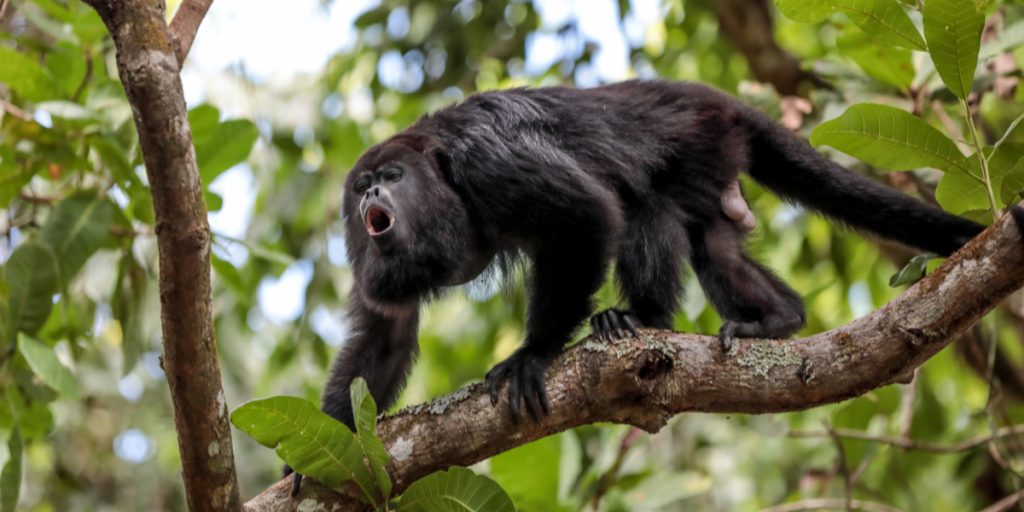It’s Official: 9 Out Of 10 Primates Think Private Finance For Nature Is Bollocks

Recent years have brought about a lot of talk about private investment in nature and many new terms have been coined – green bonds, blended finance, payments for ecosystem services etc. – all to magically create new classes of investment products that will supposedly channel billions of private money into nature conservation and restoration without governments having to foot the bill.
At the heart of all these efforts lies the supposition that ‘governments are unable to commit the necessary funds’ and thus the private sector has to come to the rescue. This is of course a lie to further neoliberal policies, but in the case of private finance for nature it is also not going to happen.
The real problem with creating private finance for nature is that nature restoration and conservation does not produce any cash flow that the private sector could harness to create a return on investment. Biodiversity and ecosystem services are public goods and by themselves have zero financial value unless they are commercially exploited for profit by harvesting biomass or by ringfencing services for private gain.
It is not possible to create financial investment opportunities in ‘nature’ without governments implementing regulatory policies that create cash flows in the first place. The main advocates of private investment in nature are well aware of the shortcomings of nature ‘as is’ for creating new investment opportunities. Hence the effort is currently mainly going into pilot projects and lobbying governments. The first step to achieving scale in the future is to advocate ‘blended finance’.
Blended finance is a misleading term and describes a situation where the financial product being sold mixes ‘concessional and commercial returns’. That’s financial jargon for saying that public funds need to be included to make the ‘investment’ attractive to private investors.
In order to understand what that looks like in practice, we can use the World Bank’s rhino bond product released in 2022 and “structured, priced and sold” exclusively by Credit Suisse, the very bank that was rescued by a forced fire sale to UBS just a few months later. So how does this this ‘conservation bond’ actually work?
The World Bank issues US$150 million worth of ‘rhino’ bonds for ‘sustainable development projects’, which are sold via Credit Suisse to private investors. Of that US$150million, US$10 million is given to two black rhino conservation areas in South Africa. Instead of getting interest payments on these bonds, the investors get a success payment linked to the increase in black rhino population at the end (after 5 years). That success payment comes from the GEF, meaning from government funds, and the World Bank repays the principal of the bonds at maturity. Investors get a success payment linked to the growth rate in the black rhino population instead of normal bond interest payments (‘coupons’).
For this to be attractive either the success payment would need to be significantly higher than the interest payments over 5 years or the bonds need to be sold below book value (so there is a further gain when the principal is repaid at the end). This is exactly what happened – the bond was sold at 94.8% of its nominal value and the maximum success payment is US$13.8 million. Investors will also want security that the maximum payout is at an achievable target growth rate of black rhinos. That means the target and measurement will be set in such a way as to be easily achievable. They will also be ‘narrow’, that is the whole US$10 million the two conservation areas receive from the bond can be channelled into whatever boosts the rhino population growth rate. Which means that this narrow approach has the potential to be damaging to other species (e.g. divert more ranger resources to rhinos so elephant poaching increases) or the ecosystem as a whole.
There are so many things wrong with this approach it is difficult to know where to start. First and foremost, this is not a ‘conservation’ bond, the principal is invested in sustainable development projects, that is development projects with a financial return to the lender (The World Bank). These obviously cannot be conservation projects, as conservation cannot provide a financial return. The conservation part is a marketing gimmick financed by the GEF.

Because the principal of the bond is invested in sustainable development, notice that no private funds actually flow into the conservation project! We could have achieved the same outcome for conservation by providing a US$10 million GEF grant to South Africa to invest in those same rhino conservation areas and would have likely saved many millions on intermediary fees (for Credit Suisse) and established much more comprehensive project success criteria and controls. So in this case (as in most others), there is no actual ‘private finance for nature’.
Another example of green bonds that have come back into favour are ‘debt-for-nature’ swaps. These products allow (foreign) cash-strapped low-income countries to restructure their external debts in return for conservation outcomes. A good example how that looks in practice are so-called ‘blue bonds’, as used by Belize to restructure US$553 million worth of debt in return for marine conservation pledges. However, “allocations to environmental projects can fall well short of amounts saved in debt repayments”. It gets worse, as the linked article continues, “In the case of Belize, just $84 million of the $553 million deal actually went toward marine conservation, Barclays estimates. A further $86 million is allocated to intermediaries and service providers such as re-insurers, advisers and credit providers, Bloomberg News has reported. That’s on top of the $10 million originally disclosed by Belize, to help cover the closing cost for the transaction.”
Given that green bonds constitute the vast majority of the green finance market as is exists today, this is not very encouraging for the whole exercise of ‘attracting private investment into nature’. The World Bank in its recent paper on private finance for biodiversity and ecosystem services acknowledges as much. The paper concludes, “Financing biodiversity projects is difficult because of their local nature, small scale, and lack of monetizable cash flows. Putting a price on something historically seen as a public good is challenging. Given these circumstances, integrating biodiversity risk into risk management more broadly (including through greening supply chains) is likely to have a larger impact.”. The whole idea of a ‘Green Wall Street’ and private money fixing the environmental mess created by private businesses is basically a phantom solution.
Having successfully indoctrinated governments and the public to believe that only the private sector is efficient and can ‘fix things’, financial players will use any green bonds, blended finance and similar instruments to extract fees, not to fix nature.
It would be nice if this whole effort could be stopped before it ever reaches a scale where it becomes too big to fail. As the World Bank acknowledges in its report, the best way forward is to focus on eliminating subsidies that are harmful to nature and on getting private businesses to “integrate biodiversity risk into risk management more broadly”. The latter can only happen through mandatory government regulation.
To read more about Real vs Phantom solutions, check out our The BU$IN€$$ Of Nature Report.

Lynn Johnson is a physicist by education and has worked as an executive coach and a strategy consultant for over 20 years. In her work she pushes for systemic change, not piecemeal solutions, this includes campaigning for modernising the legal trade in endangered species, to help tackle the illegal wildlife trade.





